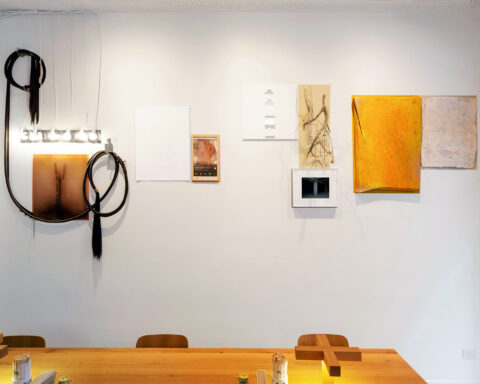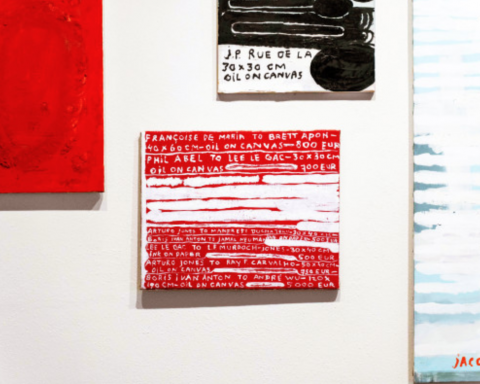Francesca Pirillo: What were some of your most important early influences that lead you to decide to be a photographer?
Pupa Neumann: My father was an art dealer. I grew up surrounded by paintings. I was not necessarily looking at them but they were around me all the time. This is for sure my first source of artistic inspiration. When I was 11, my aunt gave me a small Instamatic camera with a cube-shaped flash: it was the most luxurious gift, a magical object like Aladdin’s lamp. It was wonderful to capture memory, to freeze time, to capture my surroundings. As we were quite poor and films were expensive, my mother decided that I should let others photograph me and that I only had the right to take three photos per film myself. So my first emotional tie related to photography was frustration, but I also got taught that each image is precious.
Who was this mysterious woman? That’s how my creative process started for the series of women’s portraits La Madeleine de Gide and my projection on this submissive woman. Was she modern? An idiot? Free? I do not have the answer.
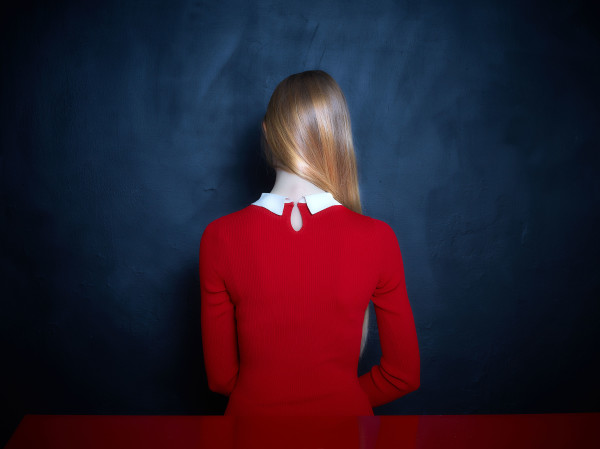
Le dos, 2016. La Madeleine de Gide series. Photography. Digital print
F.P.: I believe that your work is very complex and well – structured; your pictures have different styles from each other: melancholic pictures, as in Les Ravissants, the vulnerability, as in Forever Young, ironic representations that recall the fashion style, as in Daydream, etc. What are the aspects that you think characterize more your work? What subjects do you deal with in your art?
P.N.: You have mentioned vulnerability as the theme for the series Forever Young but it is precisely the opposite. It is about a cougar and devouring mother. This is what I wanted to express in Forever young. The series was put on hold because of the shootings for La Madeleine de Gide, but I will continue working on it.
It is quite obvious that my art is about women in our society.
That’s my main theme. Without being a feminist, I think that we women must be strong and take our responsibilities. We are responsible for the world. Women are at the beginning of everything. After all, they are the ones who raise the little boys.
We have put a lot of effort into finding our freedom and our equality with men, but now that we’re getting there, that freedom is eroded little by little.
That’s why each of us has the duty to fight to maintain that freedom.
I photograph womankind in all its richness and forms, from the insolent and mocking woman to the submitted one. All women interest me. We are all very different, and even inside one woman there are several others. That’s what I tried to show with the series Doppelgänger, women struggling with their contradictions.
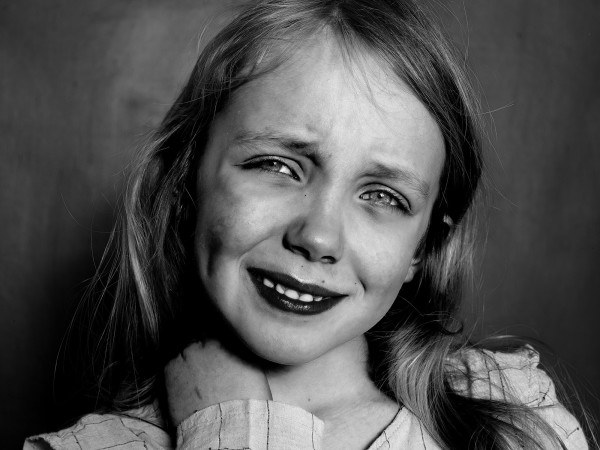
Les soeurs | Les ravissants series | Photography | Digital print | 2016 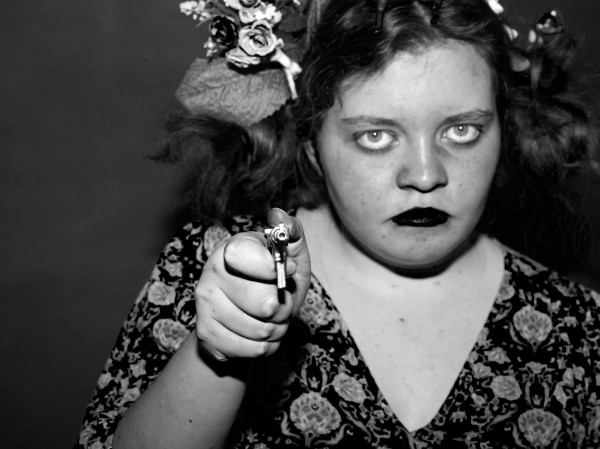
Hauts les mains | Les ravissants series | Photography | Digital print | 2016
F.P.: Tell us about Daydream
P.N.:I started working on Daydream in 2014, at a time when there was much talk about the veil. Gradually the colorful feminine universe was covered with a black veil, so I started making a colorful series (mainly in primary colors) as opposed to the darkness of the ghostly garb. I’ve injected a hint of frustration. The Cry, for example (inspired by a triptych by Francis Bacon), I clearly wanted to be about a woman who suffocates under the veil (this time a bride’s veil). She opens her mouth to scream, but there is no one to hear her. Other images of the series are variations of the same theme, like the woman under glass, or the woman vomiting a veil but also women who, in contrast, gave up and just accept it.
After all, as it is not an obligation but a choice, I make no judgment. Women do what they want. In contrast, when it is a man who decides, it becomes ridiculous and monstrous.
F.P.: In your work, a concealment of the subject’s face is recurring, as in L’après-coup, Fur, Canon de beauté, etc. What kind of message do you want to transmit to the viewer? Tell us about these works.
P.N.: As soon as we see a face, we think of a specific person. The human face is very surprising: it defines a single specific being and not a human in general, which is not the case with the human body. I try to make these pictures universal, by not giving an identity to the subjects.
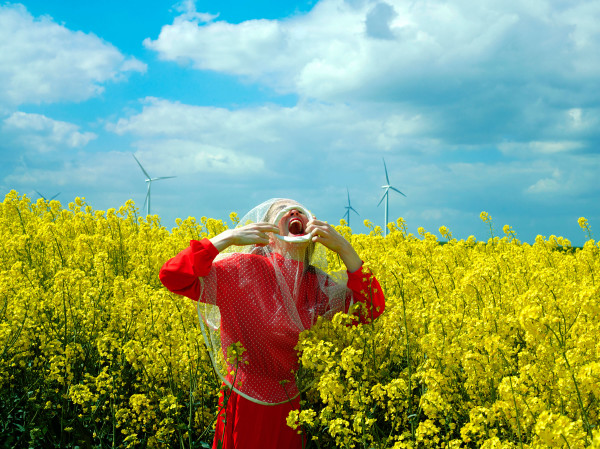
F.P.: Another aspect of your work is to portray static women, almost lifeless, almost mannequins…
P.N.: The idea that I am most afraid of is the submissive woman, like in the science fiction movie Soylent Green from the seventies, where women are considered (to be) furniture.
F.P.: Tell us about Misfits
P.N.: Misfits is about the role of women in society, but this time it is the women who have gotten themselves into trouble. Let’s say that the white space is an empty world, where everything is yet to be created.
The woman has all the space in the world, and constructs a story around it. For example, in Domestic Violence a naked woman with pretty red shoes is alone with a dresser; her dresser contains its spirit and history.
One might think that the woman only has to be beautiful, but a woman is not that simple, she finds a way to get her hair stuck in the dresser’s drawer. Women are complex.
F.P.: One of your series that I like best is Splash. The image fragmented into water reminds me the Impressionist painting. Tell us about how you came up with this idea and how you developed it.
P.N.: Splash is about rebirth. A woman merged with water like a child in the mother’s belly. I began to photograph a naked woman under water like an embryo. It was just a simple image, a decorative picture, and I quickly realized it lacked color. So I played around with dresses in bright colors and the reflections of the water. A try to capture a process in progress rather than a fixed state frozen in time, like still frames of a kaleidoscopic vision of a woman who is about to surface, so metaphorically to be born.
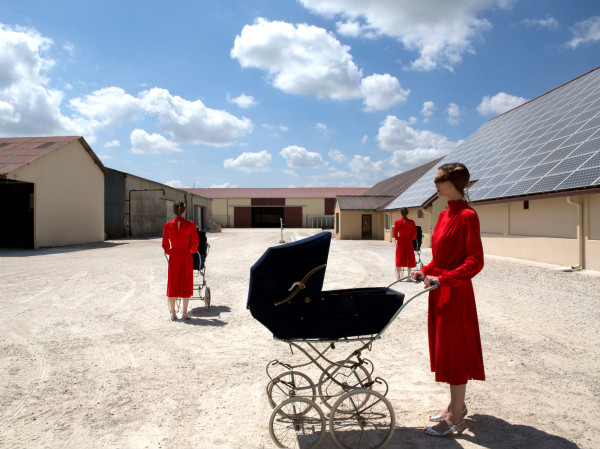
F.P.: What are your favorite artists?
P.N.: Medieval art is my main source of inspiration. Paintings and sculptures of the so called dark ages before the dawn of the modern era that seems is coming to an end, remind me of the contemporary violent eruptions of the sacred dimension of existence and the longing for appeasement.
As if we were living again a dialectical battle of two coexisting worlds, the manifestation of inhuman punishment and devoted love, Hieronymus Bosch’s Inferno and it’s apparently peaceful counterpart, the medieval Pietà.
Erwin Olaf and Diane Arbus are definitly the two photographers that influenced me most.
F.P.: Can you tell a bit about the inspiration behind DOPPELGÄNGER series?
P.N.: A family photo. I had already seen Shining of Kubrick, and the twins terrified me. These same twins were inspired by Diane Arbus’s Identifical Twins. Then I accidentally found a picture of my sister and me dressed in the same way, stareing at the camera, and I thought that we all have a twin that we have to face one day. The one who we compare us with or we are compared with, and who confronts us with the question of who we are.
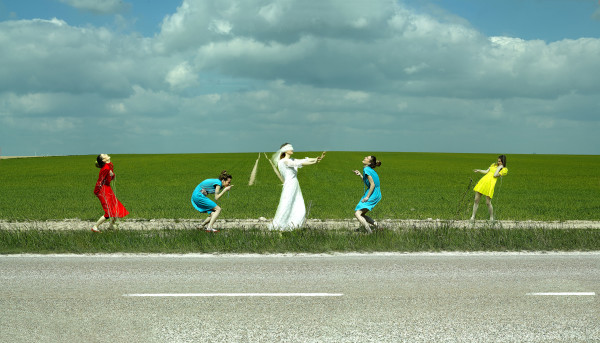
F.P.: What is the role of the artist in today’s society?
P.N.: Certainly, the artist is at the center of his time. An artist transforms the exterior world into a symbolic object, a so called piece of art. Art is the dissemination of the essence of a given epoch, it is the artefact of a precise period of life. In a certain way, art is in a constant struggle with journalism, but art always wins because its means of capturing truth are more refined and subtle. In my case, I proceed methodically unconsciously, avoiding to deliver an explicit message.
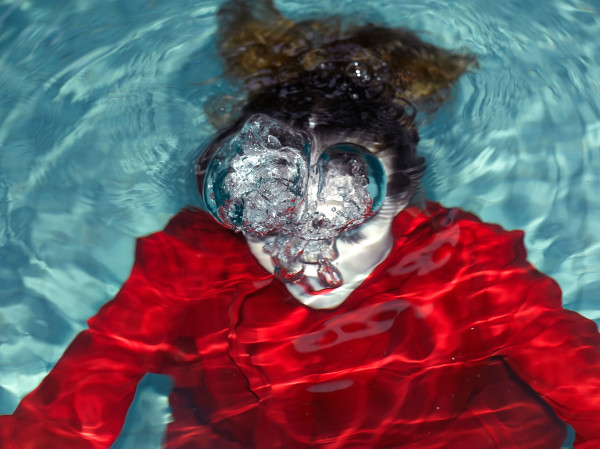
Amphitrite | Splash series | Photography | Digital print | 2014 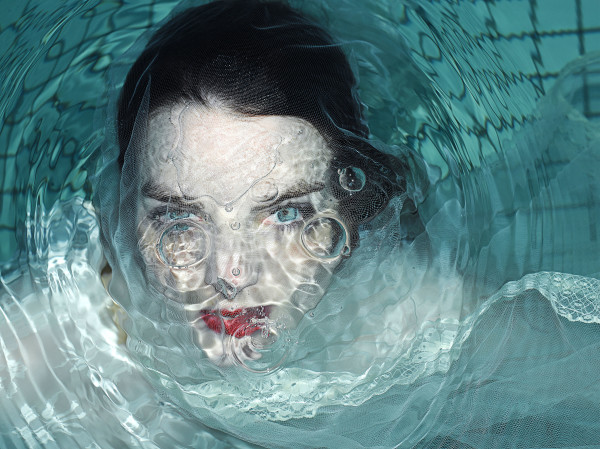
Asia | Splash series | Photography | Digital print | 2014
F.P.: What role does autobiography play in your current work?
P.N.: I never directly address my own life in my work, but when I look at my drawings of erotic women, tied up, often bearing scars, I think it comes from my childhood. As a young girl I was desperately loving my mum who was sick and who spent the end of her life in a hospital attached to a web of wires and tubes. I saw her naked and the numerous scars on her body.
My mother, her illness and death, the passionate love I had for her, are certainly the gravitational center of my creative research.
F.P.: What are you working on at the moment?
P.N.: I am refining and taking further the La Madeleine de Gide series. I’ve already written a book (out of it), but I want to publish an even more beautiful version. I rarely took pictures as romantic ones and it amuses me to go in that direction. These are pictures that come close to paintings. Seen like that, it’s like renewal.
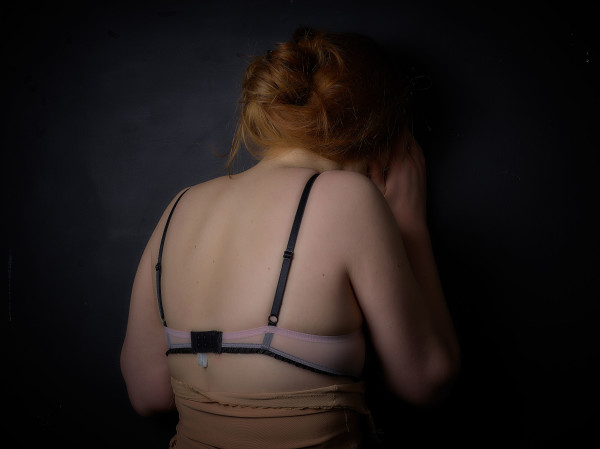
Fur | Photography | Digital print | 2015



